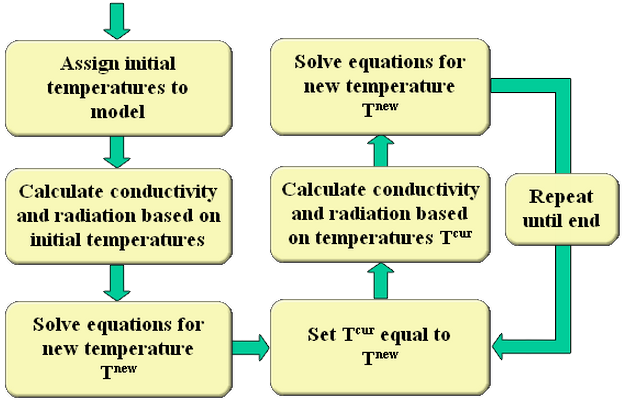Overview of Process
Like steady-state analysis, the presence of temperature-dependent conduction (orthotropic material model) or radiation makes the analysis nonlinear. The solution cannot be obtained directly because the number of unknowns is larger than the number of equations, or due to the nonlinear equations. Unlike steady-state heat transfer, which uses an iterative approach, the transient heat transfer analysis assumes that conductivity and radiation are constant for each time step. The value of the conductivity and heat flux due to radiation are based on the temperatures calculated during the previous time step. The solution of a next time step is linear. The conductivity and heat flux due to radiation are then updated for each subsequent step based on the last calculated temperatures. Provided the time steps are small, this approximation is accurate. This process is shown in the following figure.

You can control how often the nonlinear values (conductivity or radiation flux) are updated.
For an overview of nonlinear conduction and radiation, refer to Nonlinear Steady-state Heat Transfer Analysis for details.